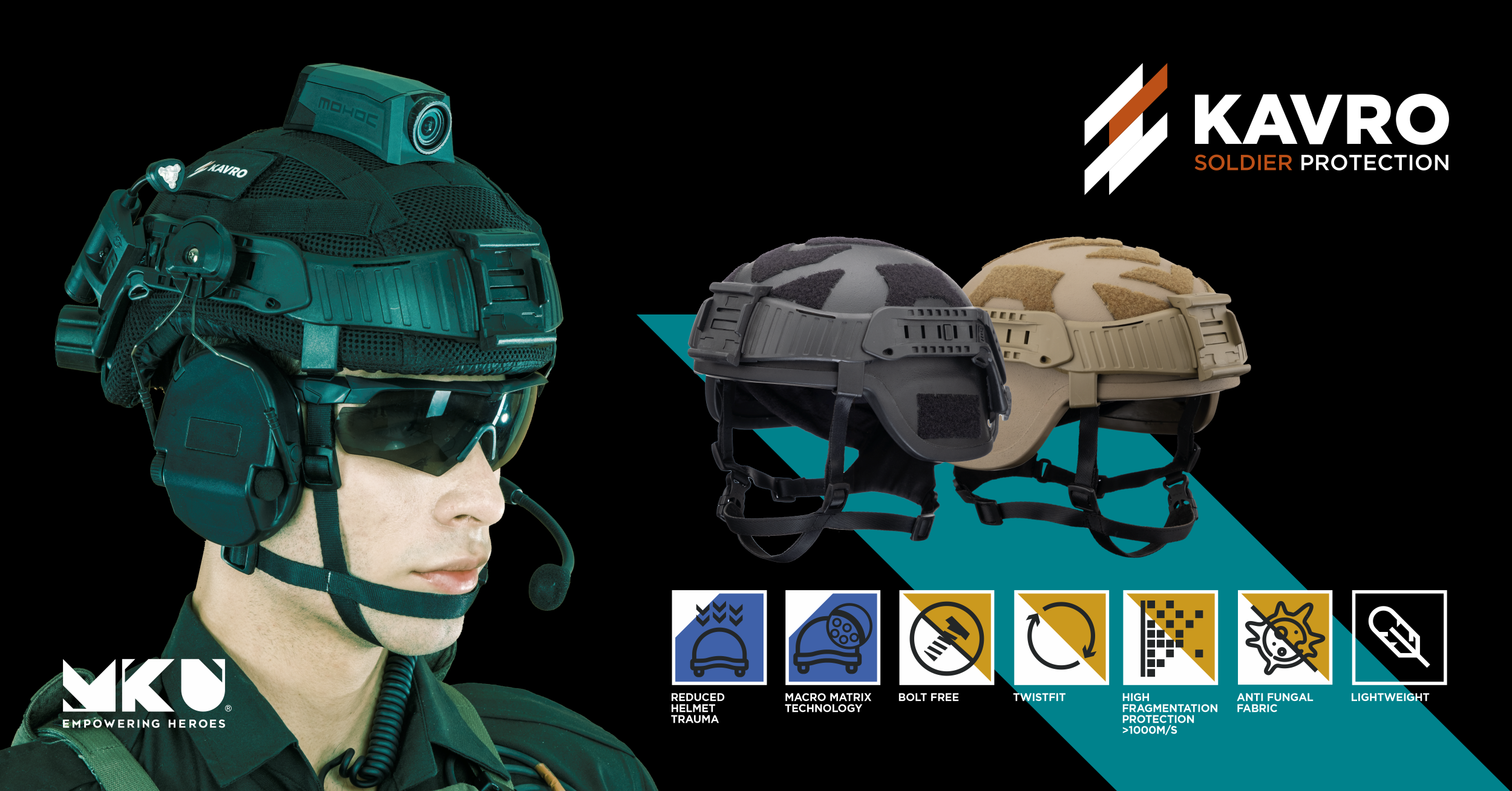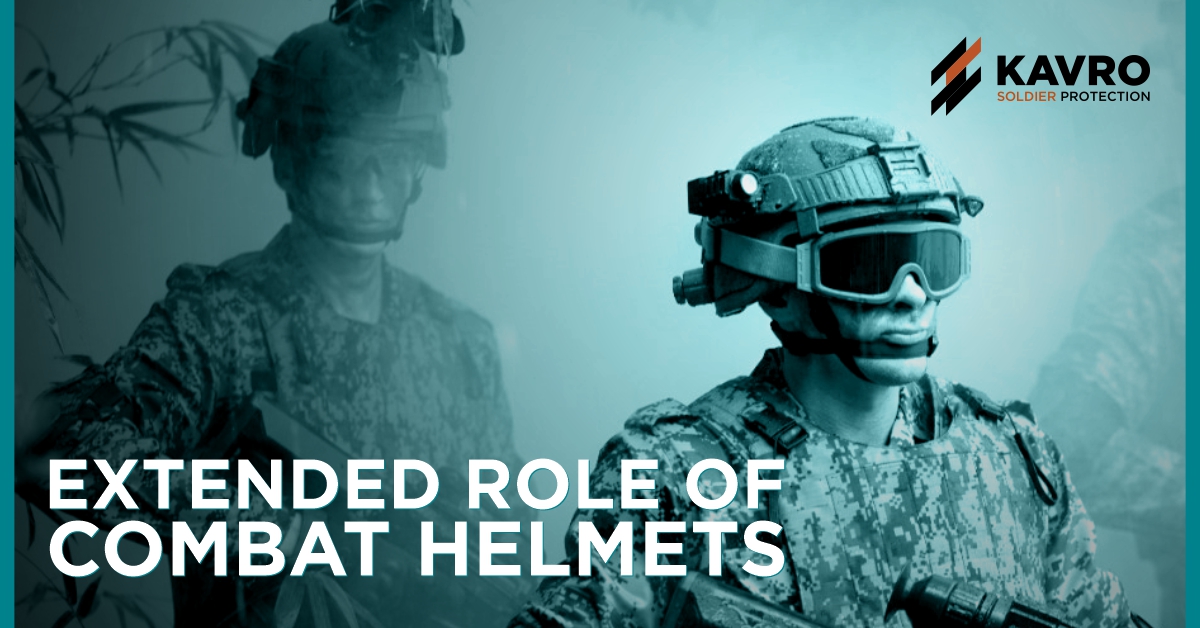No doubt bullet injuries are more lethal, but fungal infections that tend to nourish on the inner side of helmets during deployment of combatants in tropical and rainy terrains, impede the efficiency/performance by hitting on the concentration of soldiers on the battlefield. The harness/Padding system on the inner hull of the helmet can often soak up and retain high levels of moisture in tropical and damp environments. It is an important requirement for agencies facilitating soldiers operating in the jungle environment with proper and quality head gear to overcome itching and related issues when helmets are being worn over an extended period of time.
The contemporary operating environment continues to evolve rapidly with armed forces around the world mostly paying heed to technological advancement in weapon science. Military operations ranging from Humanitarian Assistance and Peacekeeping Missions to Counter-Terrorism and Border Conflicts are being experienced in varied terrains like rain forests, tropical jungles to hot and humid deserts demanding cent percent commitment from combatants without any hindrance due to ill-fitted protection gears and low-quality material used in the manufacturing of Ballistic Protection. Ballistic Helmets have a critical role to play and are tested most during the mission.

No doubt bullet injuries are more lethal, but fungal infections that tend to nourish on the inner side of combat helmets during deployment of combatants in tropical and rainy terrains, impede the efficiency/performance by hitting on the concentration of soldiers on the battlefield. The harness/Padding system on the inner hull of the helmet can often soak up and retain high levels of moisture in tropical and damp environments. It is an important requirement for agencies facilitating soldiers operating in the jungle environment with proper and quality headgear to overcome itching and related issues when helmets are being worn over an extended period of time. Poor fitting/inadequate ventilation with damp harnesses/pads, lead to discomfort. Excessive chafing due to low-quality material used in the manufacturing of protection gears can also lead to irritability and infections in severe hot/humid environments.
Helmet itch induced by fungal infection can be very annoying and frustrating. Additionally, a severe itch beneath your protective helmet when patrolling through tropical rainforests or arid terrain or while being there on the firing range could be dangerously distracting. Helmet itch occurs most when wearing headgear frequently or for sustained durations. combat Helmet itch can be caused by a variety of causes. While some causes may be due to combat helmet lining/harness/pads, the itchy scalp may be due to a medical condition, such as dermatitis, dandruff, etc. Such adversities get further aggravated when the material used for harness/pads is friendly for fungal/microbial growth.

Apart from primary issues like itching and infection, fungal growth may also impair the functioning or use of material by changing its physical properties. Non-resistant materials used in ballistic helmets are susceptible to direct attack of fungus, resulting in deterioration of the material used apart from acting as a catalyst for multiplied growth rate. Physical deterioration of material used in harness/pads of helmets adversely affects the physical properties of the material.
The functioning of today’s ballistic helmets extends far beyond the mere role of protective headgear. It now acts as an epicenter of soldiers’ situational awareness. A number of devices like cameras, Night Sights/Electro-Optical devices, GPS devices and a number of other HMDs (head-mounted devices) can now be mounted on a soldier's helmet enabling up-to-date situational feedback to Command and Control centers for inter and intrasquad operating efficiency. Such devices do not go unaffected by the menace of fungal infections, in case the helmet, they are mounted on, gets infested. Broad-spectrum damages that such an outbreak causes in soldier headgear can be summarized as follows:
Fungal Diseases and Infections:
The fungus can cause severe physiological problems such as allergies, like contact dermatitis, or sometimes life-threatening infections caused by several fungi which are omnipresent and grow whenever a conducive situation of humidity and temperature gets created, also when the harness/pads are not properly protected. The menace of fungal growth in contact with a soldier’s skin is basically a paradise for fungus growth or may result in aesthetically unpleasant odors that deter users from using the helmet.
Damage to electrical or electronic helmet accessories and systems:
Fungi can form undesirable coats/deposits causing electrical insulation that can adversely affect the electrical characteristics of critically tuned electronic circuits of Communications Head-Sets, Torches, Cameras and other HMDs, etc.
Damage to optical systems:
The fungus can also adversely affect light transmission through the optical system, block delicate moving parts or even change non-wetting surfaces to wetting surfaces with a resulting loss in performance.
Fungus growth can not only have temporary detrimental effects on a soldier’s health and performance but can also induce serious life-long impairment if ignored/overlooked. It is widely accepted that lack of knowledge on fungal issues in combats needs more attention. There are some pre-defined military standards like MIL 810 G/JS 55555 which govern proper assessment & compliance to the extent to which the army helmet material will resist fungal growth.
Broadly five different kinds of micro-organisms are highlighted in the MIL 810G standard that damage (infect) the body coming in its contact, are as follows:
Aspergillus Niger:
Aspergillus Niger is one of the most common causes of otomycosis (fungal ear infections), which can cause pain, temporary hearing loss, and, in severe cases, damage to the ear canal and tympanic membrane
Aspergillus Flavus:
Aspergillus flavus is a saprotrophic and pathogenic fungus with a cosmopolitan distribution It is best known for its colonization of cereal grains, legumes, and tree nuts. Aspergillus flavus aflatoxin production can lead to acute hepatitis, immunosuppression, hepatocellular carcinoma, and neutropenia, also viral hepatitis highly increases the risk of hepatocellular carcinoma.
Aspergillus Versicolor:
It is a slow-growing
filamentous fungus commonly found in damp indoor environments and on food products. Mycotoxins can act as immune suppressants which explains the association of increased prevalence of frequent infections among inhabitants of damp surroundings.
Penicillium funiculosum:
Penicillium funiculosum is a plant pathogen infecting pineapple. It is used as a source of the enzymes xylanase and beta-glucanase which are a non-starch polysaccharide hydrolysing enzymes used in the pig feed Rovabio Excel. Penicillium funiculosum results in the high level of infection and allergies in humans.
Chaetomium Globosum:
It is a saprophytic fungus that primarily resides on plants, soil, straw, and dung. They are found in habitats ranging from forest plants to mountain soils across various biomes. Chaetomium Globosum is human allergens and opportunistic agent of fungal mycosis and neurological infections. However such illnesses occur at low rates.
The main emphasis is laid on the basic hull of the helmet, whereas besides physical attributes of the
Ballistic helmet little or no emphasis is paid to the harness & suspension system which largely comes in contact with the soldier’s head/skull and facial parts. Helmet harness becomes a major reason for such fungal/microbial infection, if not treated otherwise for such fungi/microbe resistance. These components no doubt provide comfort to the user but hardly prevent fungal growth unless given anti-fungal treatment to prevent growth because all such components come in direct contact with the skin/head of the combatant and may cause infection.
Whilst drafting RFQ, authorities, should lay stress on compliance to standards that ensure anti-fungal/microbial properties in the materials being used for fabrication of harness & suspension system along with associated components and insist on test reports from accredited laboratories. There are defined test procedures and standards already in place that detail processes to be followed and results desired to rate the fungal resistance of equipment for combatants on a scale of zero to four.
Macromatrix Technology:
Macromatrix technology within Kavro tactical helmet ensures accurate and uniform protection across the compound curve of the tactical helmet shell from a wide spectrum of ballistic threats, very high-velocity fragments, secondary fragmentation, blunt trauma, behind armour blunt trauma and accidents.
Manufactured using non-toxic and allergen-free materials, Kavro Military helmet does not allow water or moisture retention over prolonged usage. MPSS (Modular Padding Suspension System) along with the helmet retention system is made from unique fungi-resistant material which is allergen-free and anti-bacterial making prolonged wear comfortable for soldiers in extreme climatic conditions. Offering ≤ 10mm BABT (Behind Armour Blunt Trauma) and increased protection against fragments and shrapnel, Military Helmet by MKU become the choicest headgear for soldiers on duty.





 LOGIN
LOGIN











